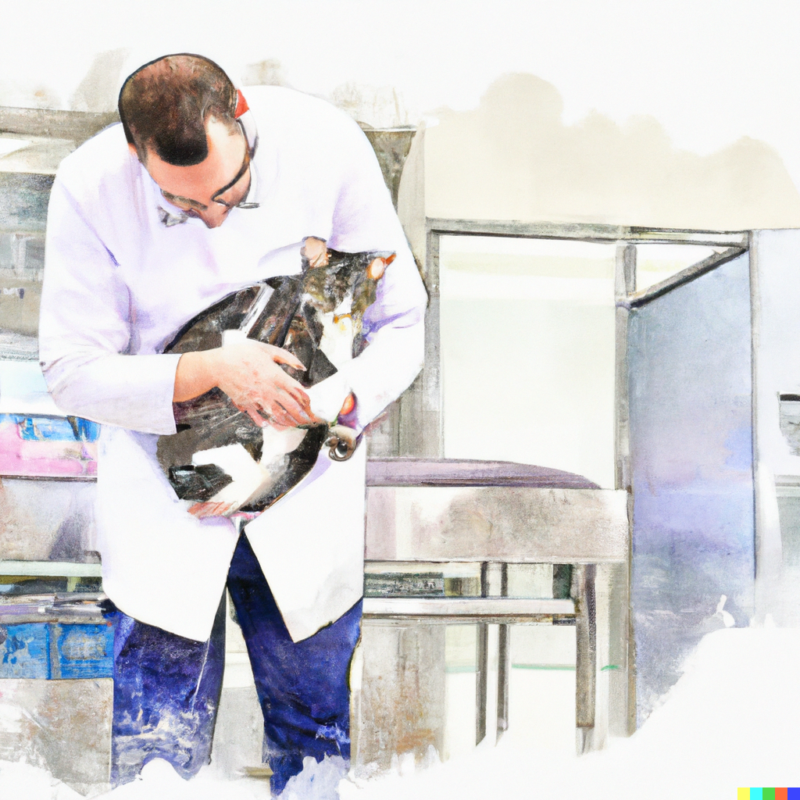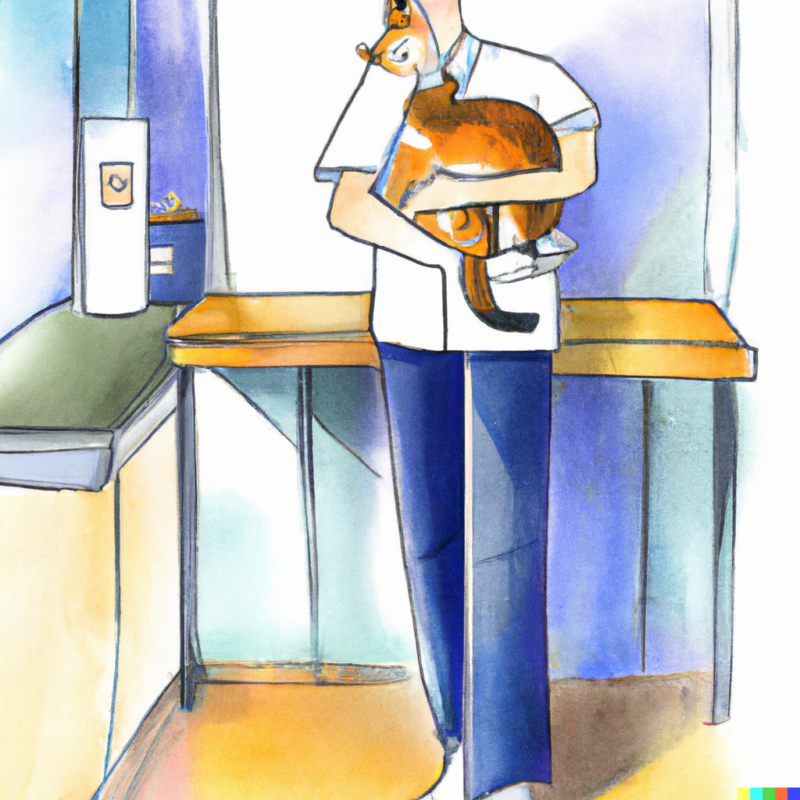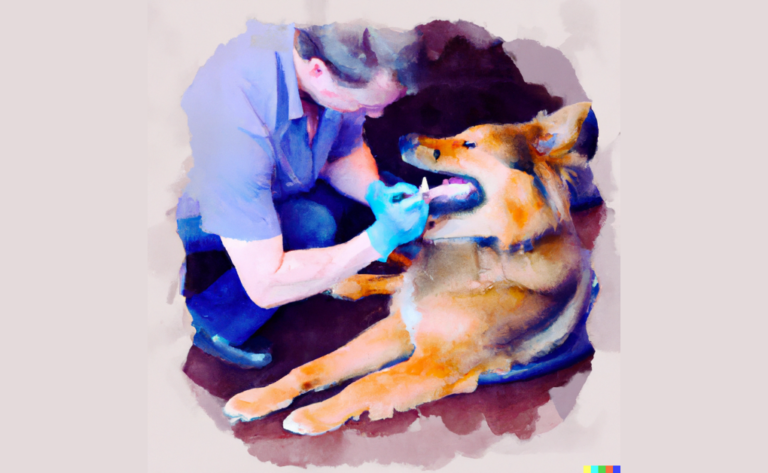Stem Cells from Fat May Help Fight Kidney Disease in Cats
Introduction
Emily was devastated when she received the news that her beloved cat, Whiskers, had been diagnosed with kidney disease. The prognosis was grim, and she felt utterly helpless, wanting nothing more than to find a way to ease her furry friend’s suffering. In her quest for answers, Emily stumbled upon an innovative treatment option: stem cell therapy derived from fat cells. This emerging approach offered a glimmer of hope for Whiskers and other cats battling kidney disease.
Stem cells are found in almost every animal, including humans. As a result, stem cell therapy is a treatment option for many diseases, including kidney disease. The stem cells in this therapy come from fat tissue, which can turn into any tissue or organ.
Fat tissue contains a particular type of cell called adipose-derived mesenchymal stem cells (ADMSCs). These ADMSCs can differentiate into specialized cells, including those found in the kidneys, making them ideal candidates for treating kidney disease in cats.
Stem cell treatment is currently being studied in cats at the University of Wisconsin School of Veterinary Medicine. The researchers investigate whether ADMSC injections can help prevent or slow the progression of chronic kidney disease in cats.
There are two types of stem cells: embryonic and adult.
- Embryonic Stem Cells
Embryonic stem cells (ESCs) are special cells found in early embryos that give rise to every cell type in our bodies. They’re very similar to adult stem cells, except they’re not fully developed yet.
They’re called embryonic because they come from the embryo stage of development. However, adult stem cells are already fully formed and ready to go.
When we talk about ESCs, we’re talking about the cells that develop into heart muscle, brain tissue, skin, bone, etc., during fetal development. These cells are called pluripotent because they can become any cell in the body.
- Adult Stem Cells
Adult stem cells are used in medicine because they don’t cause ethical issues like those associated with embryonic stem cells.
Adult stem cells are often referred to as mesenchymal stem cells because they come from connective tissue such as bone marrow. Mesenchymal stem cells are multipotent, meaning they can differentiate into multiple types of cells. For example, they can become muscle cells, fat cells, cartilage cells, bone cells, blood vessels, nerves, etc.
Diseases Treated Using Stem Cell Therapy for Cats

Cats suffer from many infectious diseases, including kidney disease. Kidney disease is seven times more common in cats than in dogs. Stem cells derived from fat may help treat these conditions.
Kidneys filter waste from the blood and produce urine. They’re located behind the bladder and next to the intestines. The kidneys work together with the liver to remove toxins from the body.
When the kidneys fail, wastes build up in the bloodstream and cause several renal diseases. This condition is called chronic renal failure (CRF). CRF causes fluid retention in the legs and abdomen, weight gain, vomiting, diarrhea, and weakness.
While there isn’t any cure for CRF, stem cell therapies offer hope for treating this condition. Stem cells are undifferentiated cells that can become specialized cells, and scientists use them to grow replacement tissues and organs.
Researchers at the University of California San Diego School of Medicine discovered that adult stem cells taken from fat tissue could be used to create new kidney cells. These kidney cells can replace damaged tissues and restore normal function.
This study was published in the journal Cell Regenerative Medicine. Researchers found that stem cells grown from fat tissue could differentiate into functional kidney cells. These findings suggest that stem cells from fat tissue could be used to treat CRF in cats.
Regenerative medicine is an emerging area of research in veterinary medicine. This involves using stem cells to treat various conditions, including arthritis, cancer, and heart and kidney disease.
In addition to stem cells, there are several ways to deliver stem cells into your cat’s body. One way is to inject the stem cells directly into the affected organ. Another method is to implant stem cells under the skin. A third option is to infuse the stem cells intravenously.
Where can you find stem cells?
Cats’ stem cells come from fat tissue. The same fat tissue is used to produce human liposuction of the fat grafts.
Fat tissue contains mesenchymal stem cells (MSCs), multipotent adult stem cells found in connective tissues throughout the body. MSCs can differentiate into many cell types, including bone, cartilage, muscle, tendon, ligament, adipocytes, and neurons.
The cat’s body is the best place to harvest stem cells, called autologous transplantation. Autologous transplants work well because the donor’s immune system does not recognize the stem cells as foreign, and there is less chance of adverse reactions.
However, there are some risks associated with autologous transplants. For example, your cats could develop cancer due to the stress of having surgery. It might also experience complications during the procedure, such as bleeding, infection, nerve damage, organ failure, and death.
If you do not want to risk these problems, it is possible to take stem cells from another cat. This is called allogeneic transplantation. Allogeneic transplants are less risky than autologous transplants because the donor’s immune system does not attack the stem cells. However, there are still risks involved with allogeneic transplants. These include graft versus host disease, rejection, and infections.
There are also risks associated with harvesting stem cells from outside the body. These include contamination, infection, and genetic defects. Contamination occurs when the harvested stem cells contain bacteria or viruses that cause illness, and disease happens when the stem cells are exposed to germs that make people sick. Genetic defects occur when the stem cells are damaged by radiation or chemotherapy treatments.
Is stem cell therapy safe?
Stem cell therapy is generally considered safe, but it carries some risks. Injections are usually done under local anesthesia, and patients receive several treatments over months. Side effects include pain, bruising, swelling, discoloration, itching, numbness, and infection. Therefore, patients must be monitored closely for signs of infection.
How Does Stem Cell Therapy Help My Cat’s Condition?

Stem cell therapy is an emerging field of veterinary medicine. While it is still considered experimental, some veterinarians are now offering it as a potential treatment option for pets with certain conditions.
However, there are many questions about its effectiveness, including the type of cells used, where they come from, and how much you pay for them.
Several types of stem cells could benefit your pet. These include embryonic stem cells, adult stem cells, mesenchymal stem cells, induced pluripotent stem cells, and umbilical cord blood cells. Each type of stem cell has different uses, depending on the specific disease being treated.
For example, embryonic stem cells are often used to treat neurological disorders like epilepsy, while mesenchymal stem cell injections are most commonly used to treat orthopedic injuries.
Your veterinarian must determine if stem cell therapy is safe and effective for your pet. This includes determining if your pet has a genetic mutation that makes them susceptible to developing cancer and if the stem cells are derived from a source that poses a risk to your pet. If your pet does have a genetic mutation, your veterinarian may recommend that you consider another treatment option.
Suppose your pet has been diagnosed with the condition that could benefit from stem cell therapy. Your veterinarian will likely perform a biopsy to obtain a tissue sample containing stem cells. Once received, the stem cells will be cultured in a lab, grown in large numbers, and injected back into your pet.
Stem Cell Therapy to Treat Chronic Kidney Disease in Cats
Kidney disease is a progressive illness that can lead to death without proper medical intervention. In cats, it is most commonly caused by infection, neoplasia, or chronic inflammation. While there are several treatments for each type of kidney disease, none are curative.
A recent study published in the Journal of Feline Medicine & Surgery reports the successful treatment of feline kidney disease using stem cell therapy.
The researchers treated four cats with acute renal failure due to pyelonephritis (kidney infection). They administered autologous mesenchymal stromal cells (MSCs), adult stem cells derived from bone marrow, intravenously into three cats.
MSCs promote tissue repair and regeneration, and the authors hypothesized that they could help restore damaged kidneys. After one month, all three cats had recovered normal kidney function, while the fourth cat continued to show signs of improvement.
This research demonstrates that stem cell therapies are promising for treating kidney disease in humans and animals. However, further studies are needed to determine how well this approach works in people and whether it can prevent or reverse long-term kidney damage.
Frequently Asked Questions
Disclaimer: The information provided on this veterinary website is intended for general educational purposes only and should not be considered as a substitute for professional veterinary advice, diagnosis, or treatment. Always consult a licensed veterinarian for any concerns or questions regarding the health and well-being of your pet. This website does not claim to cover every possible situation or provide exhaustive knowledge on the subjects presented. The owners and contributors of this website are not responsible for any harm or loss that may result from the use or misuse of the information provided herein.







